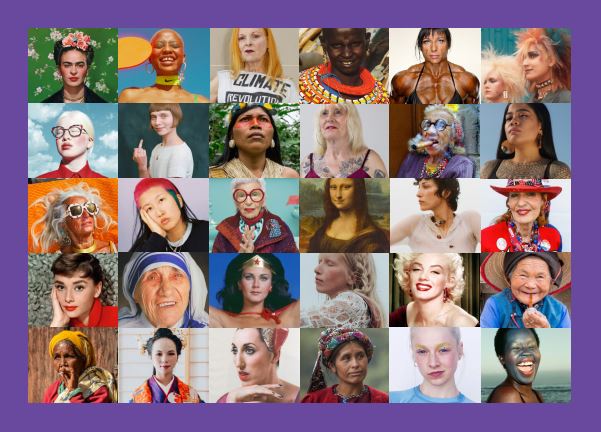On March 8, 2022, International Women's Day is commemorated and, from Natura, we want to celebrate this day with all the women in the world.
You are as you are: female, male, tall, low, fat, thin, homosexual, heterosexual, pianist, soccer player, hairdresser, transsexual, bisexual, mother, daughter, father and mother, aunt, grandmother, China, European, blonde, brunette, With pink hair, hairless, with cartridges, stretch marks, without hairs on the armpits, with legs on the legs, white, black ...

Why Women's Day is celebrated
On March 8, 1908, a transcendental event marked the history of work and the union struggle throughout the world: 129 women died burned in a fire at the Cotton factory, from New York, United States, after they declared themselves on strike in their workplace. The reason was due to the search for a 10 -hour workday reduction, a salary equal to that of the men who did the same activities and the bad working conditions they suffered. The factory owner ordered to close the doors of the building so that women withdraw and leave the place. However, the result was the death of the workers who were inside the factory. That same year, on May 3, an act for Women's Day was held in Chicago, a preamble so that on February 28, 1909, in New York, the “National Women's Day” is commemorated for the first time. With this antecedent, a year later, in 1910, the Second International Conference of Socialist Women, in Copenhagen, was developed. The central theme was the universal suffrage for all women, and by clear motion Zetkin, leader of the "uprising of the 20,000", was officially proclaimed on March 8 as International Working Women's Day, in tribute to women fallen in The 1908 strike. In 1977, the UN General Assembly officially designated on March 8 the International Women's Day.Women's Day Symbols
The lilac loop has established itself as a symbol of the feminist struggle. Already in 1908, the lilac was adopted by the English suffragists together with the white color (which symbolized the purity of its struggle) and the green (which transmitted the hope of seeing their demands fulfilled). The choice of lilac was inspired by the English nobility. Later, in the 1960s, socialist women raised their voice and demanded the same rights and opportunities that men and, for this, they chose lilac as a symbol of the feminist movement. Another version of the origin of the lilac loop has to do with the fire in the Cotton New York textile factory where the 129 seamstress women were trapped by the fire and died burned inside the factory. The legend says that the smoke that came out of the flame factory was lilac - by the fabrics they worked with - and that it could be seen from kilometers away. In addition to being an unmistakable symbol, most citizens are aware of the importance of lilac loop and claim that it is a powerful visibility tool for women's situation and claim feminism. Happy Day Women of the World! March 8, is your day, but also 9, 10, 11 ...










